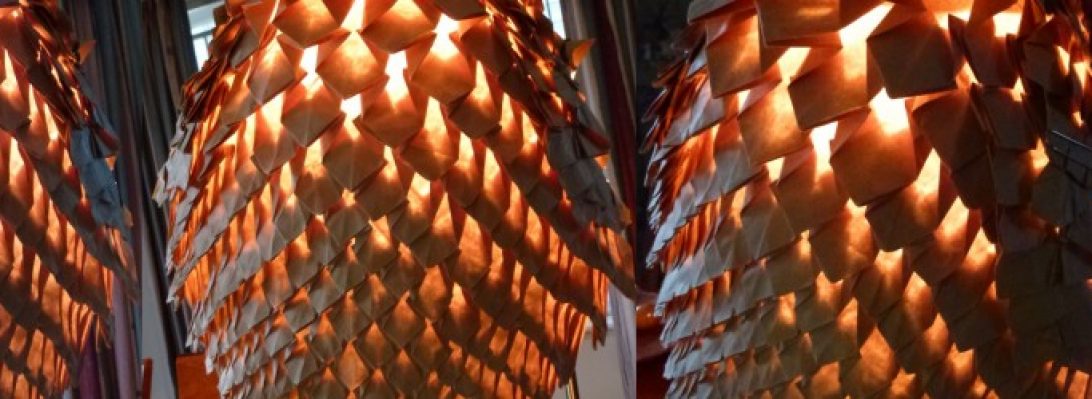Colour-change models are astonishing to me, designing models that use colour change are something special:

I have folded a number of different models like this, nothing quite like it however – what sets this model apart form any other is that each “tile” on the board is a seamless square.
Folding this from a SINGLE UNCUT square ends up being a bit of a brain-fuck. The paper was blue one side, white the other (actually cheap and nasty 70cm wrapping paper from my local dollar store). Distributing the “colour” is achieved, mostly, by bringing the sheet edges up through pleat bundles using a variety of techniques.
You can see the final location of the 4 corners of the original sheet in this development photo:

Planning/designing of a model like this is beyond me – pre-preparing the colour changes means that every bit of the paper has a job – either visible “tile”, spacer, flipper, mover etc to get the bits of colour to get where they need to go. Fold accuracy is the make or break of such designs – novices who use a “near enough is good enough” approach will not succeed here.
I was asked to test fold this, by Steven Casey, prior to publication. The diagrammed sequence is intense, starting with a 40×40 grid. Most of the folding is working on the wrong side, creating interacting pleat stacks that sit flat but that strategically manipulation pleat order. The run towards the “checkerboard” effect happens around the edges first, they they are migrated further towards the centre (although really only in a 4-unit strip around the periphery.

We then “collapse” the construct to being all the edges together, allowing us to tuck undeveloped points under developed flaps to complete the design. The resultant bundle is quite thick but remarkably tidy front and back. Simply genius.

I really enjoyed this fold – for 2 main reasons: (1) Genius geometry of models that seem impossible are things I like to fold – I can feel my brain working when solving it, and (2) I like pushing terrible/inappropriate paper through torturous processes – for me, looking after the medium helps you fold more carefully, think ahead, and I think it is a good practice.
To get a useable-size chess board from this design I would need more that 1m x 1m – I must make a ci-colour sheet of double tissue some time to test it out.


You should try out Marc kirschenbaum’s chess board next
I would if I had access to the diagrams … oh, wait, I have them … right!